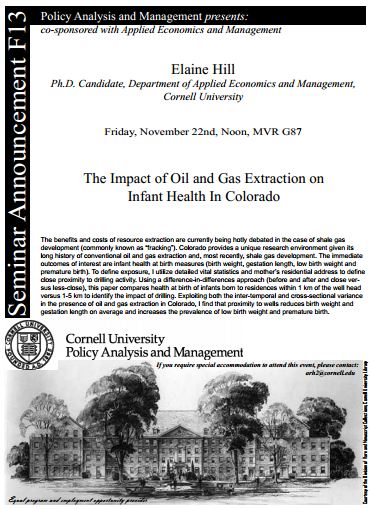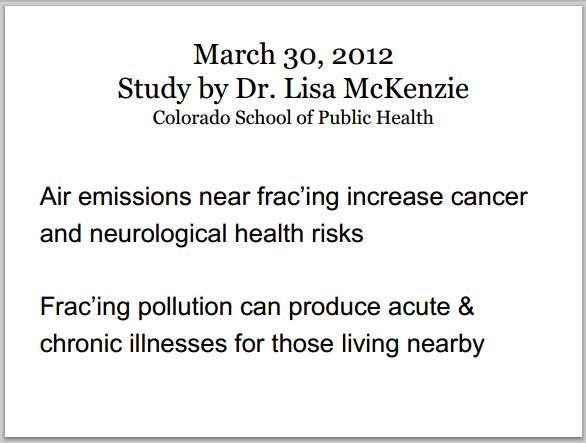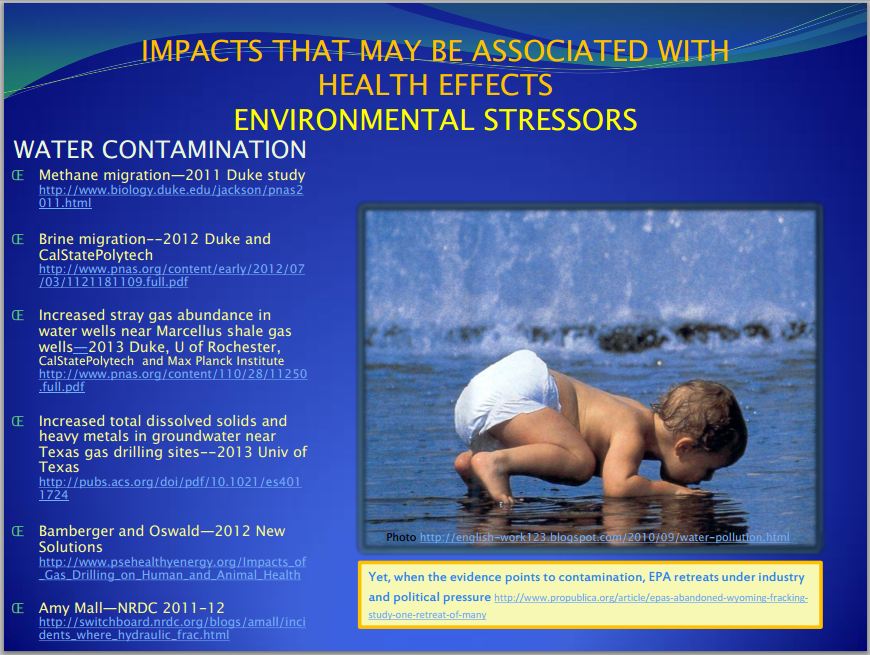Stacy SL, Brink LL, Larkin JC, Sadovsky Y, Goldstein BD, Pitt BR, et al. (2015) Perinatal Outcomes and Unconventional Natural Gas Operations in Southwest Pennsylvania. PLoS ONE 10(6): e0126425. doi:10.1371/journal.pone.0126425
Pitt study shows link between fracking, lower birth weights, [AS USUAL] Industry group blasts research, findings by J.D. Prose, June 3, 2015, Times on Line
Editor’s Note: This updated version reflects a change in the number of unconventional wells in Beaver County.
PITTSBURGH — University of Pittsburgh researchers say a groundbreaking study focusing on southwest Pennsylvania released Wednesday shows that pregnant women living near natural gas fracking wells are more likely to have babies with lower birth weights.
“These findings can not be ignored,” Bruce Pitt, a study co-author and chairman of Pitt’s Graduate School of Public Health’s Department of Environmental and Occupational Health, said in a statement. “There is a clear need for studies in larger populations with better estimates of exposure and more in-depth medical records.” Researchers said their findings held up even when factors such as the mothers’ smoking habits, prenatal care, race, education, age, previous pregnancies and babies’ gender were considered.
However, the most prominent industry group in the region — the Marcellus Shale Coalition based in North Fayette Township — vehemently disagreed with the findings, releasing a lengthy “fact check” of the study that will be published in PLOS ONE, an open access journal of the Public Library of Science.
The MSC derided the Heinz Endowment, which financially backed the study, as “a deep-pocketed organization that has a long and clear record of financially supporting anti-shale activism.” It also charged that the study relies on two previous papers looking at similar issues that were “thoroughly debunked,” [DOESN’T INDUSTRY AND ITS MANY ARMIES OF LAWYERS AND CORRUPT POLITICIANS LOUDLY DEBUNK, USUALLY WITH MUCH NOISE AND LITTLE – IF ANY SCIENCE – ANYTHING THAT DOESN’T MEET THEIR LIES AND PROPAGANDA CRITERIA?] that the researchers’ definition of low birth weight is actually higher than the medically accepted definition and that the PLOS ONE is not a legitimate scientific journal with rigorous publishing standards. “Unfortunately, a new non-peer reviewed paper — funded by the Heinz Endowment and posted on a pay-for-play website — fails by virtually every measure to demonstrate basic sound research principles,” the MSC said.
A team of researchers from Pitt’s Graduate School of Public Health and Magee-Womens Research Institute studied the births of 15,451 babies born in Washington, Westmoreland and Butler counties between 2007 and 2010 in which the mothers had at least one well 10 miles from their homes. The team determined that the mothers closest to wells with hydraulic fracturing, commonly referred to as fracking, were 34 percent more likely to have babies who were “small for gestational age” compared to mothers who lived farthest away from wells.
Researchers said “small for gestational age” equates to babies with birth weights below the smallest 10 percent when compared to other babies. There are just 18 active [AND HOW MANY OTHERS?] unconventional wells, or hydraulic fracturing wells, in Beaver County, according to the state Department of Environmental Protection. The controversial method of breaking shale and extracting gas with a high-pressure water and chemical mixture occurs much more in surrounding counties in Pennsylvania and Ohio.
Pitt said in the statement that the study does not draw a direct link from fracking pollutants to lower birth weights, but he called for additional research to assess the impact of exposure on pregnant women.
In an interview with The Times, Pitt reiterated that if additional similar studies bear out his team’s findings there needs to be a concerted effort by government, industry and academic interests to address the issue.
“It’s certainly better for the environment and public and, from all experiences, also better economically and maybe that will be motivation enough,” he said.
As for the MSC’s comments, Pitt said PLOS ONE is a “very important, international, peer-reviewed journal” that has an academic editor and at least two reviewers assess each article it publishes. The Pitt article was submitted for publication on Jan. 24.
And, Pitt said the Heinz Endowment was not involved in the analysis or conclusions. “There was no agenda from the funder,” he said. “This was our design and interpretation.”
‘Fracking’ Linked to Low Birth Weight Babies, Pregnant women who live near multiple natural gas wells tend to have smaller infants, research suggests by Robert Preidt, June 3, 2015, HealthDay News
Living close to a high number of “fracked” natural gas wells may be linked to an increased risk of having a lower birth weight baby, according to a new study of Pennsylvania birth rates.
High-volume hydraulic fracturing — also known as “fracking” — allows access to large amounts of natural gas trapped in shale deposits. Natural gas wells using this method are increasingly common in the United States. For example, the number of these types of wells in Pennsylvania’s Marcellus Shale rose from 44 in 2007 to more than 2,800 in 2010, the researchers pointed out.
In this study, University of Pittsburgh researchers analyzed the birth records of more than 15,400 babies born in Pennsylvania’s Washington, Westmoreland and Butler counties between 2007 and 2010.
Women who lived close to a high number of natural gas fracking sites were 34 percent more likely to have babies who were “small for gestational age” than mothers who did not live close to a large number of such wells, the study found.
Small for gestational age means a baby is smaller than normal based on the number of weeks the baby has been in the womb, according to the March of Dimes.
The findings held true even after the researchers accounted for numerous factors that could affect a newborn’s weight, including whether a mother smoked, her race, age, education, prenatal care and whether she’d had previous children, as well as the baby’s gender.
The study, published online June 3 in the journal PLOS One, does not prove that living close to a high concentration of natural gas fracking sites caused lower birth weights, but does show the need for further investigation, the researchers said.
“Our work is a first for our region and supports previous research linking unconventional gas development and adverse health outcomes,” study co-author Bruce Pitt, chair of the University of Pittsburgh Graduate School of Public Health’s Department of Environmental and Occupational Health, said in a university news release.
“These findings cannot be ignored. There is a clear need for studies in larger populations with better estimates of exposure and more in-depth medical records,” he added.
Fracking produces waste fluids, along with air and noise pollution.
“Developing fetuses are particularly sensitive to the effects of environmental pollutants. We know that fine particulate air pollution, exposure to heavy metals and benzene, and maternal stress all are associated with lower birth weight,” Pitt said. [Emphasis added]
Study: Proximity to fracking tied to lower birth weights by Laura Arenschield, June 3, 2015, The Columbus Dispatch
“I don’t think what we found is going to change policies any time soon,” said Bruce Pitt, chair of the university’s department of environmental and occupational health.
“Until they do a larger (study) — and it might have to be done in many, many places — I don’t think we’ll have all the facts to help an obstetrician help a mother make the best fact-based decision, or help a public policy maker at the local or state level make the best fact-based decision.”
The study was published in the journal PLOS One.
The researchers analyzed data related to 15,451 babies born in three southwestern Pennsylvania counties from 2007 through 2010, logging birth weight and tracking how close the mother lived to fracking wells. During that time, there were as many as 2,864 wells.
They divided the data into four groups based on proximity to areas that had the most dense number of fracked wells.
They found that pregnant women who lived closest to the most wells were 34 percent more likely to give birth to babies who were small for their age than mothers who lived farther away.
The researchers considered babies to be of lower weight if they were among the lowest 10th percentile.
The researchers also factored in outside variables that could affect birth weight, including whether the mother smoked, the type of prenatal care she received, her race, education, age, the baby’s gender and whether the mother had other children.
Their findings still held, according to the university.
Pitt said the study does not mean that pollutants from fracking wells, which can include benzene, toluene and xylene, caused the lower birth weights.
But, he said, more research should be done to help parents and doctors make better choices for their children.
A spokeswoman for Energy In-Depth, an advocacy group for the oil and gas industry, did not return a request for comment today. [Emphasis added]
[Refer also to:
2015 05 04: Secondhand Smoke
As it turns out, pollution from our fracking wells in Pennsylvania may be drifting down to Maryland, raising ethane levels in the state to unhealthy levels.

The study, published in the journal Atmospheric Environment, looked at hourly measurements of air pollutants like ethane and methane — gases that are found in natural gas — in Baltimore, Maryland and Washington, D.C. between 2010 and 2013. It found that ethane measurements increased by 30 percent between 2010 and 2013 in the region.
…
Ethane spikes in Maryland and D.C.’s air isn’t good news for residents of the region: when ethane is breathed in, it can cause nausea, headaches, and dizziness.
Anthony Ingraffea, PhD, Dwight C. Baum Professor of Engineering, Cornell University, said, “In 2008, when New York State first declared a moratorium on fracking, only six peer-reviewed papers on the health and environmental impacts had been published. Now there are more than 400, and the vast majority show a clear and present danger. What’s more, many problems are unfixable by regulations of any kind. [Up to 500 Peer-Reviewed Studies as of June 3, 2015]

2013 11 18: Elaine Hill: The Impact of Oil and Gas Extraction on Infant Health in Colorado
Slide above by Larysa Dyrszka MD, September 2013
2012 07 19: Link Between Low Birth Weight and Fracking, Says New Research
2012 05 01: Human Health Risk Assessment of Air Emissions from Development of Unconventional Natural Gas Resources by Lisa M. McKenzie, Roxana Z. Wittera, Lee S. Newmana, John L. Adgatea, Colorado School of Public Health, University of Colorado, May 1, 2012, Science Direct
Results: Residents living ≤ ½ mile from wells are at greater risk for health effects from NGD than are residents living > ½ mile from wells. Subchronic exposures to air pollutants during well completion activities present the greatest potential for health effects. The subchronic non-cancer hazard index (HI) of 5 for residents ≤ ½ mile from wells was driven primarily by exposure to trimethylbenzenes, xylenes, and aliphatic hydrocarbons. Chronic HIs were 1 and 0.4. for residents ≤ ½ mile from wells and > ½ mile from wells, respectively. Cumulative cancer risks were 10 in a million and 6 in a million for residents living ≤ ½ mile and > ½ mile from wells, respectively, with benzene as the major contributor to the risk.
 Slide from Ernst presentations
Slide from Ernst presentations
2013 11 22: Elaine Hill: The Impact of Oil and Gas Extraction on Infant Health in Colorado
2012 07 19: Link Between Low Birth Weight and Fracking, Says New Research
2011 09 27: Burning Questions: Quarantined Cows Give Birth to Dead Calves In late April 2010, drilling waste water from a large storage pond leaked through its plastic liner and flowed onto a cow pasture in Shippen Township, Tioga County. Farmers Don and Carol Johnson found the leak, along with the hoof prints of 28 beef cattle who had wandered through and possibly drank the contaminated water. The waste water came from a well that had been fracked on their property by East Resources. When tested, the water contained chloride, iron, sulfate, barium, magnesium, manganese, potassium, sodium, strontium and calcium. The spill killed all vegetation in an area 30 feet by 40 feet. [Emphasis added]
Why is legal advice in Alberta so bleak? Fueling Fears by CTV W-5, Canada, February 7, 2009:
W-FIVE’s Fueling Fears aired nationally in Canada on February 7, 2009. Two days later, the Harper government’s anti-terrorist squad began harassing Jessica Ernst but not the others interviewed.


